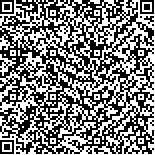| Author Name | Affiliation | | Shuang Shuang | State Key Laboratory of New Ceramics and Fine Processing, School of Materials Science and Engineering, Tsinghua University, Beijing 100084, China | | Zheng Xie | State Key Laboratory of New Ceramics and Fine Processing, School of Materials Science and Engineering, Tsinghua University, Beijing 100084, China
High-Tech Institute of Xi’an, Xi’an 710025, China | | Zhengjun Zhang | Key Laboratory of Advanced Materials MOE, School of Materials Science and Engineering, Tsinghua University, Beijing 100084, China |
|
| Abstract: |
| The glancing angle deposition (GLAD) method is a kind of physical vapor deposition and many kinds of self-standing nanostructured materials can be prepared. Here we report GLAD method to form self-standing TiO2 nanostructures on specific substrates, which makes photocatalysts easier to recycle. And smart designs of doping, decorating band gap matched materials can also make traditional photocatalysts take use of more visible light. In this review, we present some previous work fabricating nanostructured TiO2 composites for enhanced photocatalytic performance by these methods. |
| Key words: glancing angle deposition TiO2 photocatalytic nanostructure |
| DOI:10.11916/j.issn.1005-9113.17037 |
| Clc Number:X703 |
| Fund: |
|
| Descriptions in Chinese: |
| 物理气相沉积GLAD法在二氧化钛光催化剂的应用 双爽1,谢拯1,2,张政军3 (1.清华大学 新型陶瓷与精细工艺国家重点实验室(材料科学与工程学院),北京 100084;2. 西安高新技术研究所, 西安 710025;3. 清华大学 先进材料教育部重点实验室(材料科学与工程学院),北京 100084) 创新点说明:1)通过气相沉积的物理方法,制备垂直或倾斜生长的纳米阵列作为光催化剂,提高催化剂回收效率,减少二次污染; 2)运用掺杂、修饰以及复合其他材料的方法,拓展二氧化钛在可见光范围的利用; 3)通过表征手段分析,分析内在光催化效率提高机理。 研究目的: 通过多种方法,提高气相沉积GLAD法制备的二氧化钛在可见光范围的利用率,分析催化反应提高机理。 研究方法: 磁控溅射、电子束蒸镀、原子层沉积 结果: 1)通过气相物理沉积GLAD方法,制备了垂直或倾斜生长的纳米阵列作为光催化剂,提高回收效率,减少二次污染; 2)利用掺杂、修饰以及复合其他材料的方法,提高二氧化钛在可见光范围的利用率; 3)通过表征手段分析,分析内在光催化效率提高机理。 结论: 1)实现了在特定基底生长纳米阵列光催化剂的制备,提高回收效率减少二次污染; 2)使用化学方法复合窄带隙硫氧化物、贵金属及石墨烯提高催化剂在可见光范围的利用率,并分析其内在增强机理。 关键词:二氧化钛纳米阵列,倾斜生长阴影效应,带隙匹配 |




